Chapter 4, Part 19
On a clear Monday morning in the town of Nyaung Shwe in Central Myanmar, James and I walked to the north along a country road with Tharzi Pond to its right and paddy fields to the left. Just out of town, a big signboard reminded tourists to respect the local customs, to dress appropriately, and to not take photos of the locals bathing in the river. We continued walking, and about three kilometers from the town an elegant wooden structure emerged, a stark contrast to the humble houses in the environs. Its partially rusty corrugated iron roofs were crowned with ornate Burmese carvings. Below, two large oval windows revealed the dimmed interior of the stilt-supported building.
Shwe Yan Pyay monastery was constructed in the early 19th century, and until now it is still used as a Buddhist learning center in the village. We climbed the white stairs and walked inside the main study hall with a few other foreign visitors. Some novice monks sat cross-legged in the hall, while the others leaned against the wall. In front of each of them were books, which everyone was supposed to be focusing on. However, it was a moment of fascination; the visiting tourists were fascinated by the tenacity the young monks demonstrated at learning Buddhism, while some of the monks seemed fascinated by and curious about the people who looked so different from their parents, friends and neighbors. Since opening up to the world in 2011, Myanmar has been experiencing an exponential growth of foreign tourist arrivals. In a few years’ time, there will probably be more foreign faces at this monastery than young local monks.
Next to the monastery was a rectangular white structure topped with a golden stupa gleaming under the sun. Inside, niches were carved into the wall to place images of the Buddha donated by devotees and visitors alike. The sun was already high as we stepped out of the white shrine. A few more shots of the beautiful monastery compound, then we walked back to Nyaung Shwe along the road’s more leafy side.
Given the town’s present-day look and size, one would be forgiven for being unaware of Nyaung Shwe’s significance in the past. It once served as the capital of Yawnghwe, one of the states in a region dominated by the ethnic Shan people. Collectively called the Shan States during British colonial rule in Burma – at that time an extension of British India – the region was ruled by different local rulers called saophas (sawbwas in Burmese). In 1927, a 33-year old man called Sao Shwe Thaik became the saopha of Yawnghwe after succeeding his uncle. However, upon Burmese independence from the British in 1948, Sao Shwe Thaik was appointed the first president of the country. But four years later he abdicated as saopha, practically ending more than 200 years of the saophas’ rule in the region. Since then, the former Shan States have become the Shan State of the Union of Burma.
“Traffic lights” was the preferred point of reference every time we asked our hotel reception staff for directions. As we explored the town following a hand-drawn map made by a woman at the hotel, probably the wife of the owner, we kept looking for the traffic lights until we came across an intersection where we were supposed to see them. They were there, but none of the lights were turned on. Instead, a few meters away at another intersection, poles with three discs painted in red, yellow and green were placed at all four sides of the crossroads. Each disc was inscribed with mysterious Burmese script. However, judging from their location and colors, I wonder if they were in fact the town’s true ‘traffic lights’.
The streets in downtown Nyaung Shwe were perennially covered in dust, and every time a motorized vehicle passed by, particles of dust were blown into the air. Fortunately, private cars were still a rarity, and most people traveled by tractors, motorbikes, or on foot. We turned into the town’s traditional market to escape the dust, and discovered a lively tarpaulin-covered scene filled with men wearing lungyi (Burmese equivalent of sarong) and women in htamein (traditional dress for Burmese women) selling things from clothes and snacks to pirated DVDs, trinkets and thanaka wood. Mixing the powdered wood with water, one will get a natural sun screen which is then applied on the face. So important is thanaka for the local people, men and women’s faces smeared with the yellowish lotion has now become one of the most iconic cultural scenes of Myanmar.
In the riot of colors at the market, a group of women dressed in black wearing bright headdresses stood out among the crowd. Each of them carried a magenta-dyed woven bag while bargaining for pottery and other items. They belonged to the Pa’O community which make up the Shan State’s second largest ethnic group. While black, red, green, yellow and pink were the dominant colors under the blue tarpaulin tents, gold was what soared above the market. The golden stupa of a nearby Buddhist temple reflected the sun with a mesmerizing sheen. The pointy pinnacles of each and every single temple in Nyaung Shwe seemed to remind people that in spite of the town’s humble appearance, the sky is the only limit to their aspirations.
Today Nyaung Shwe serves as the main gateway to majestic Inle Lake – the principal reason for foreign tourists to flock to this part of Myanmar. The lake itself provides access to the partially abandoned Indein temple complex, arguably one of many intriguing ancient sites in the country. Along the banks of the lake, luxury resorts are beginning to sprout, providing the local residents with a glimpse of what wealth can afford them. Following Myanmar’s unexpected end to military junta rule, which ushered in an era of openness, new economic opportunities have begun pouring in. The country’s banks are now connected to the world’s sophisticated financial system, and it doesn’t require much imagination to picture how Myanmar will look like ten years from now. Urban development will accelerate, and Nyaung Shwe won’t be spared. But the question is whether it will follow most Asian cities’ paths where development often compromises cultural and historical heritage, or if it will retain its charm while at the same time experiencing rapid, but manageable, growth.
Click here for the full list of stories from the Spice Odyssey series.


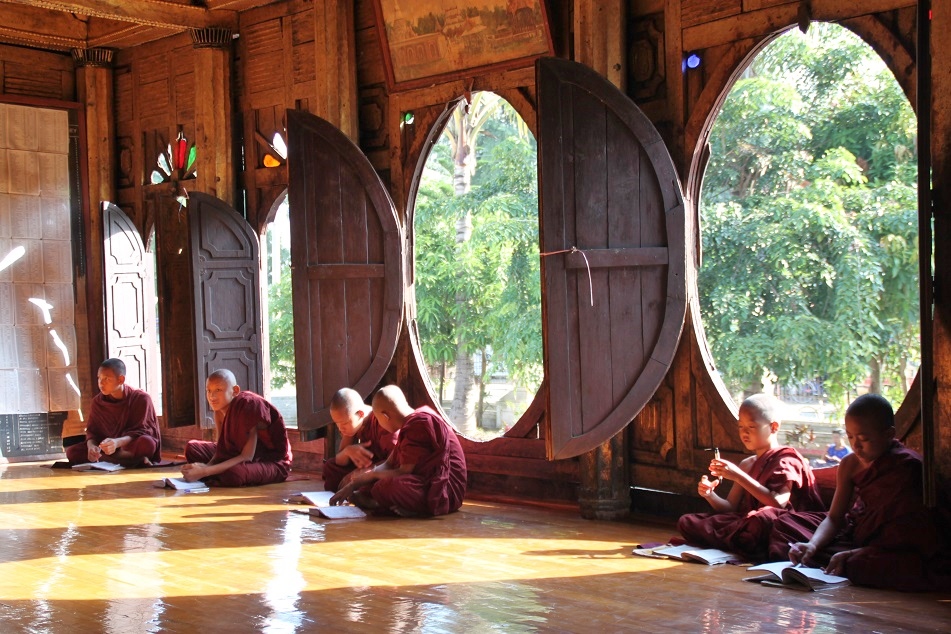
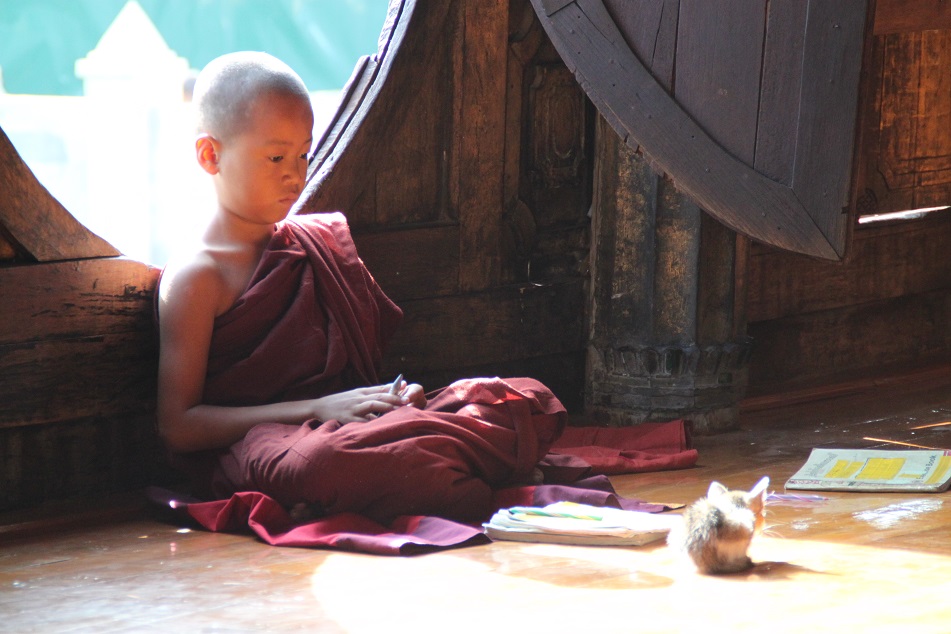
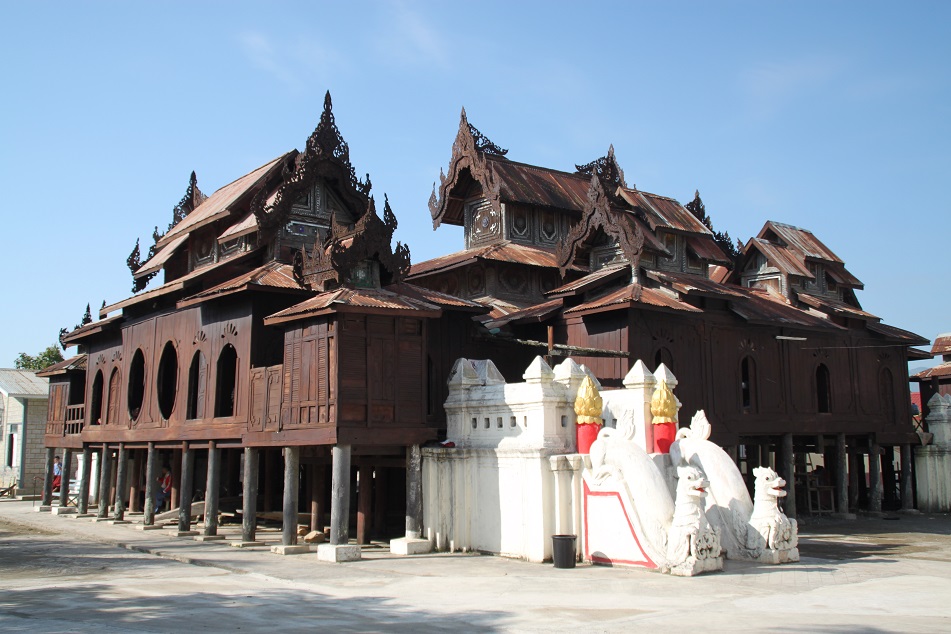
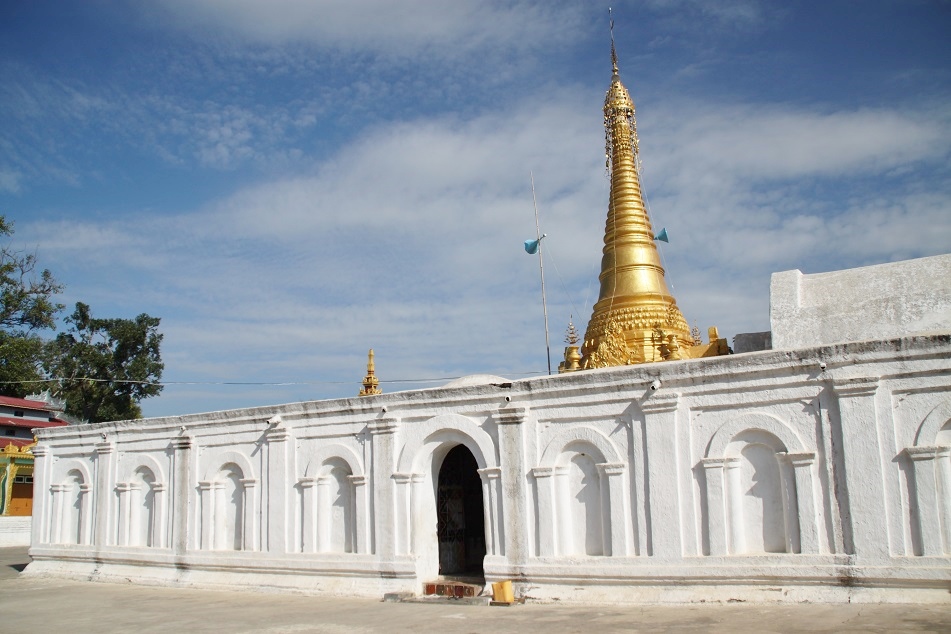

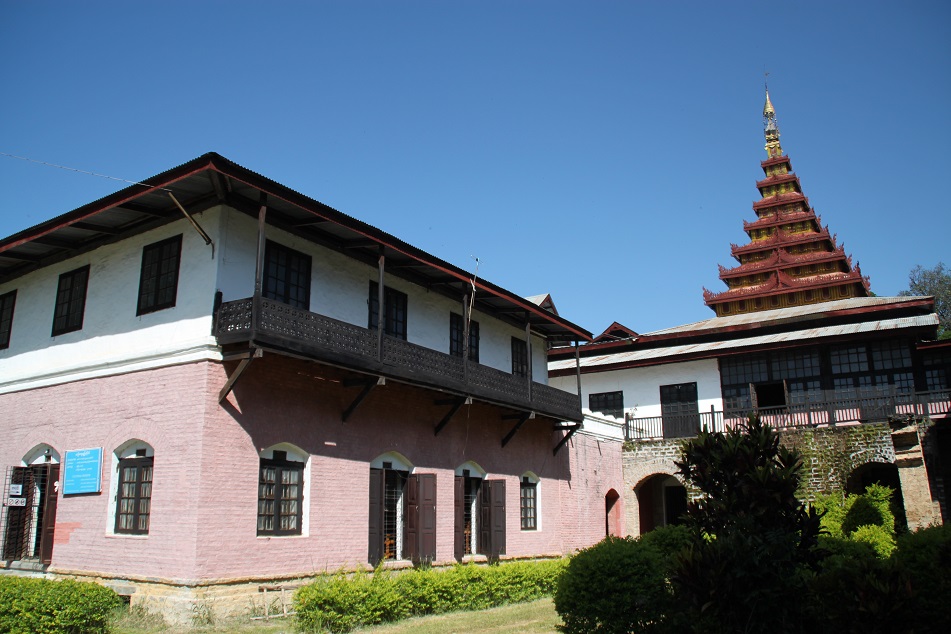
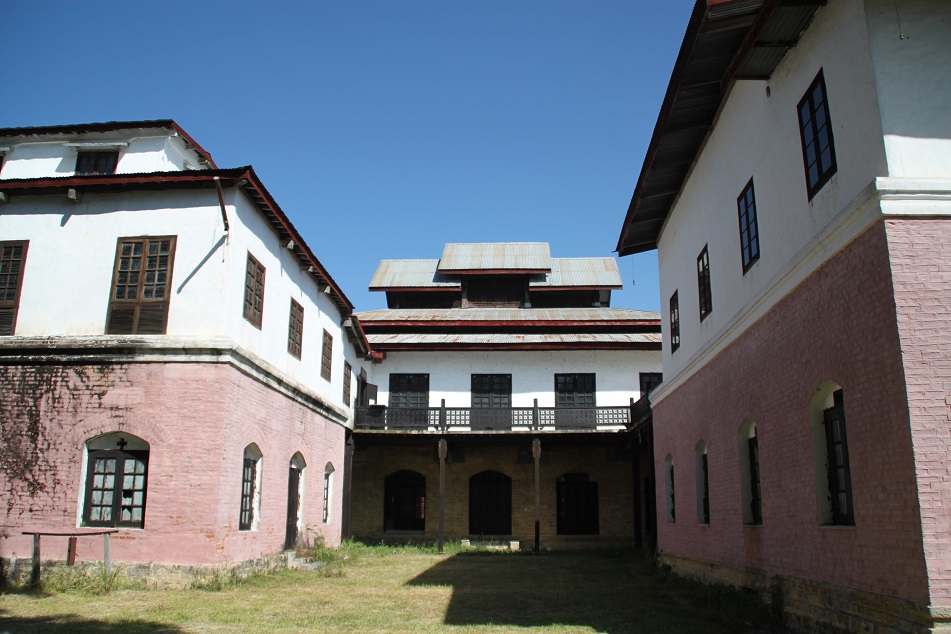
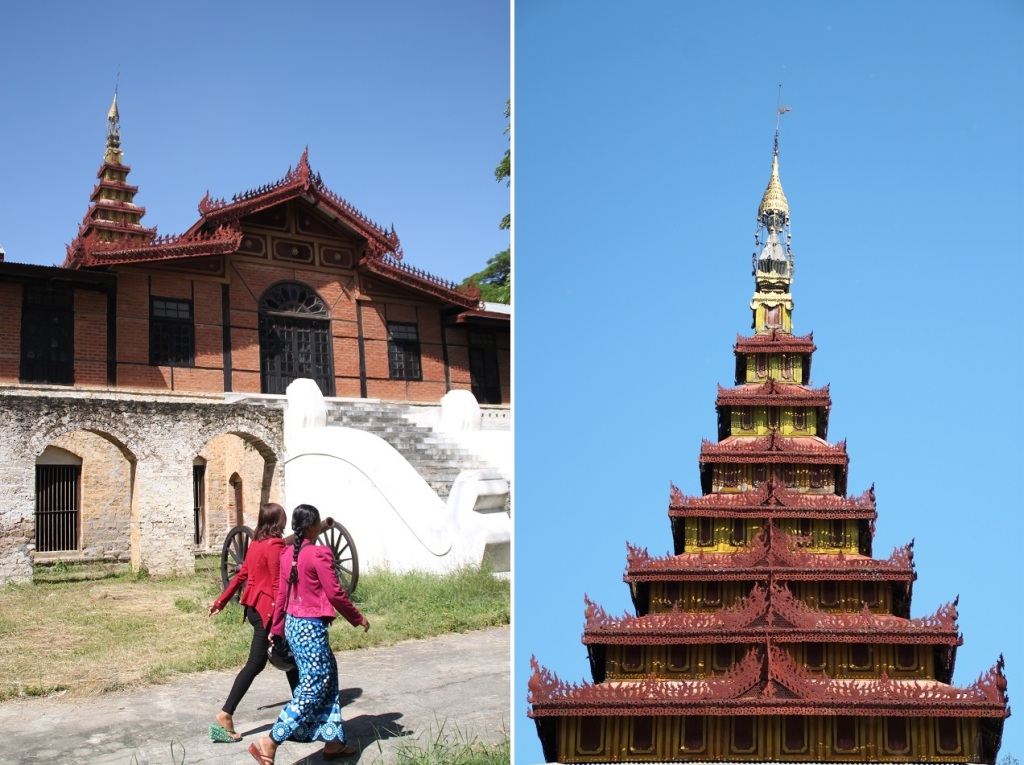
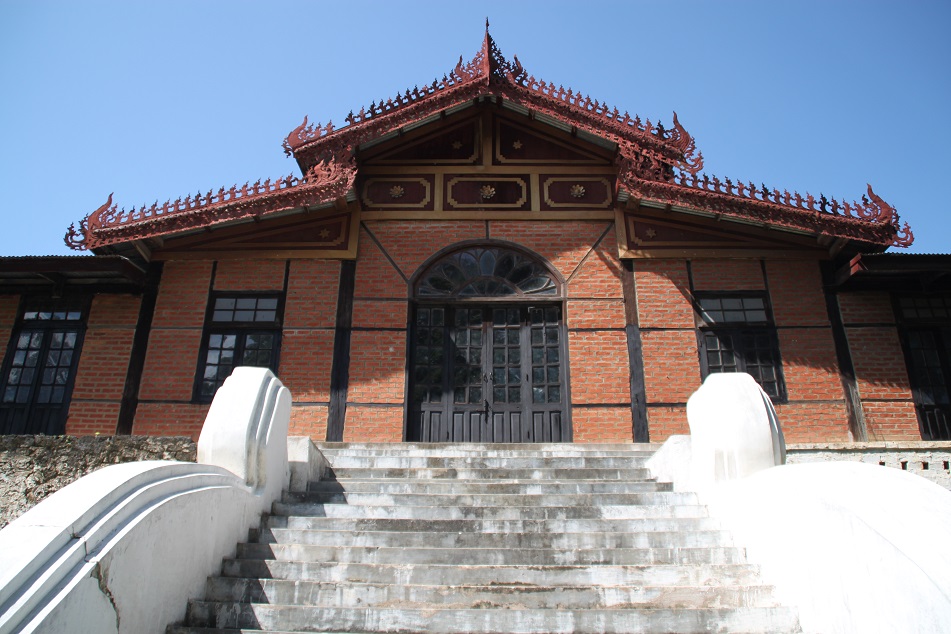
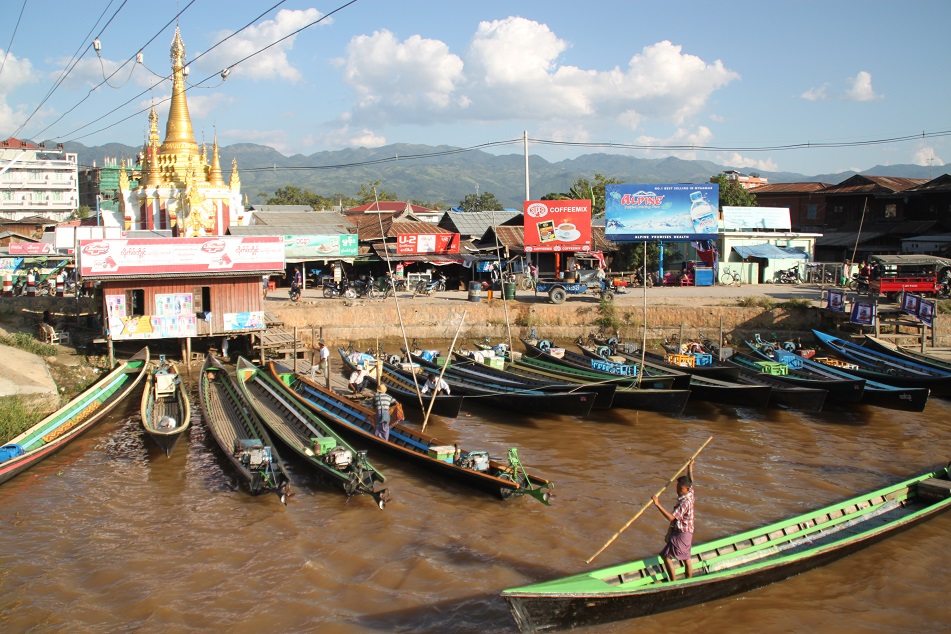
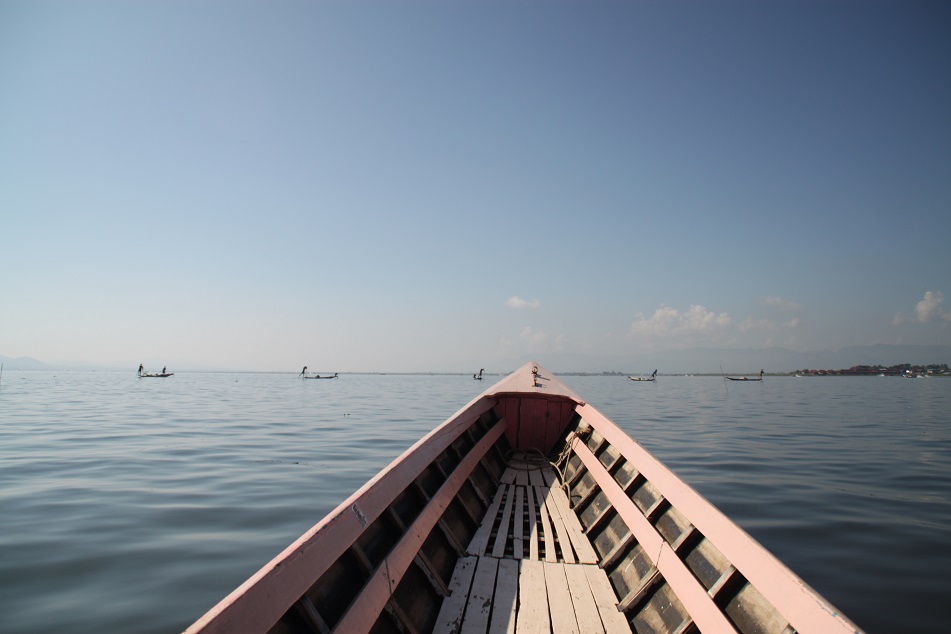
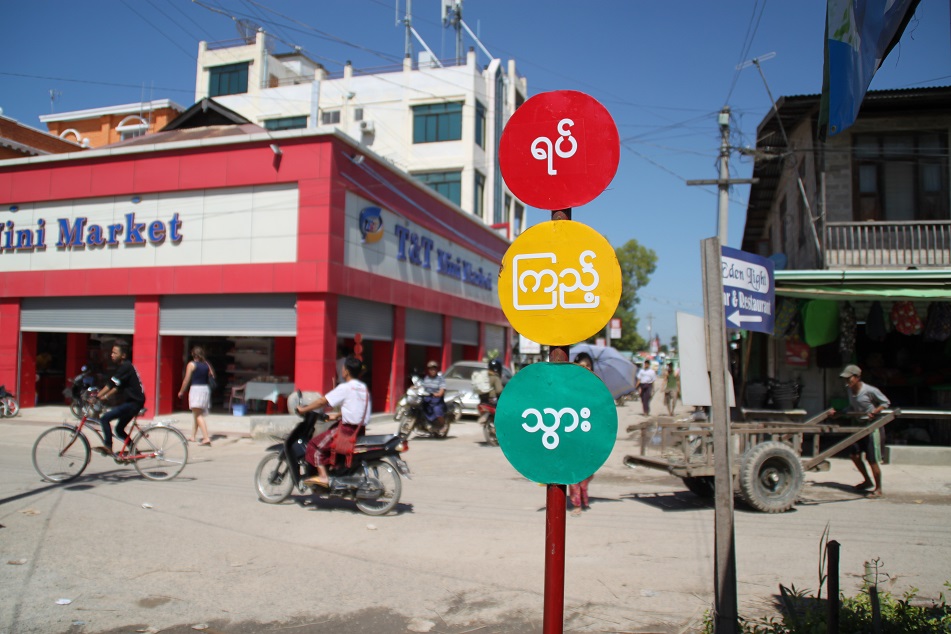

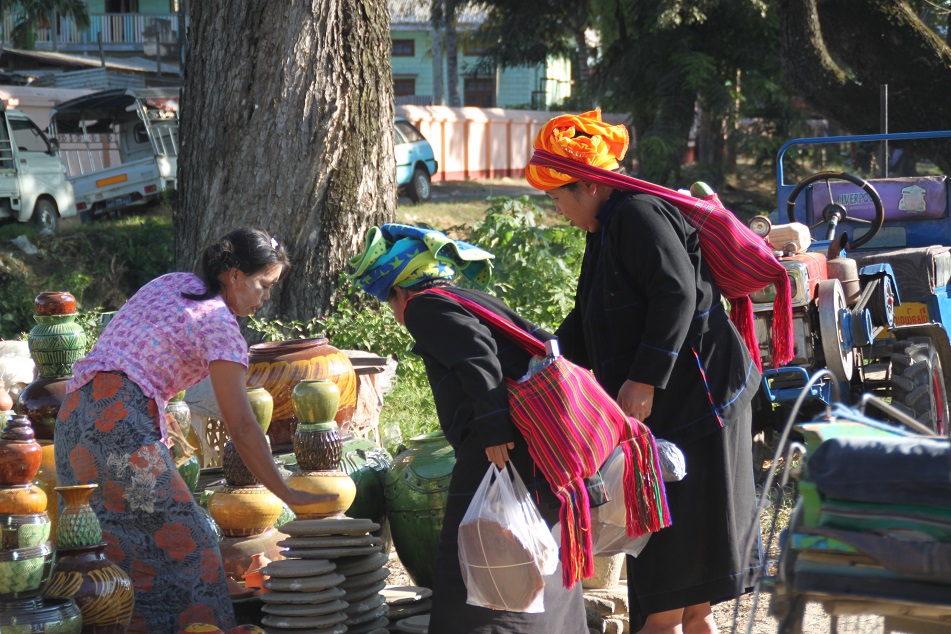
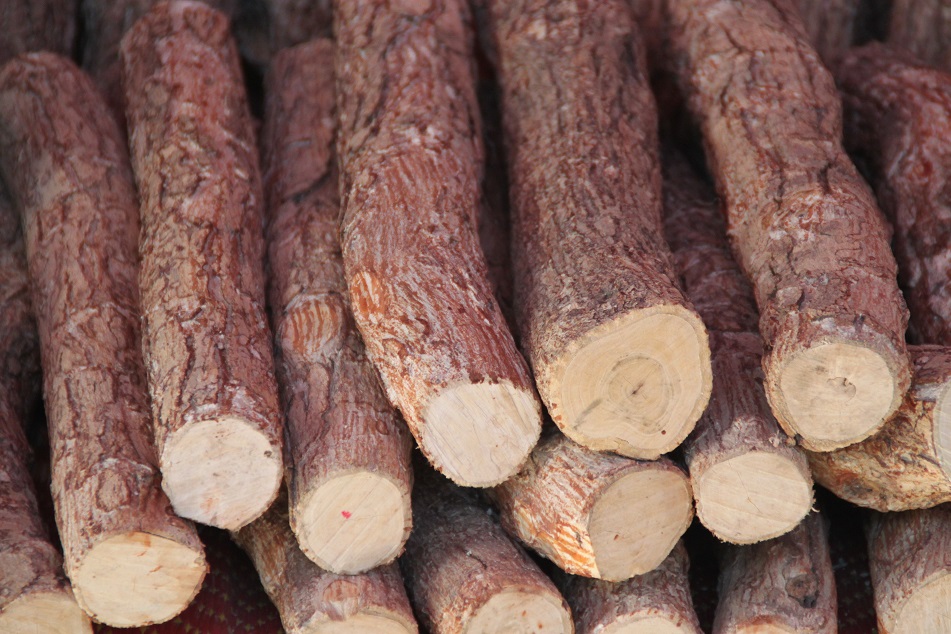
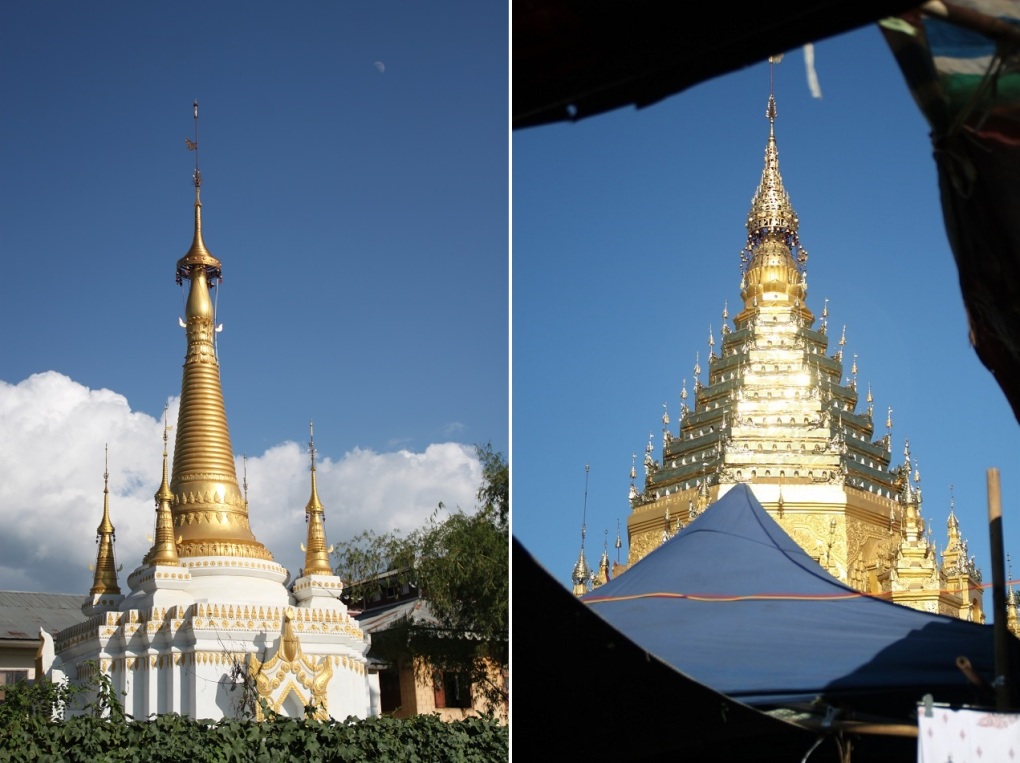
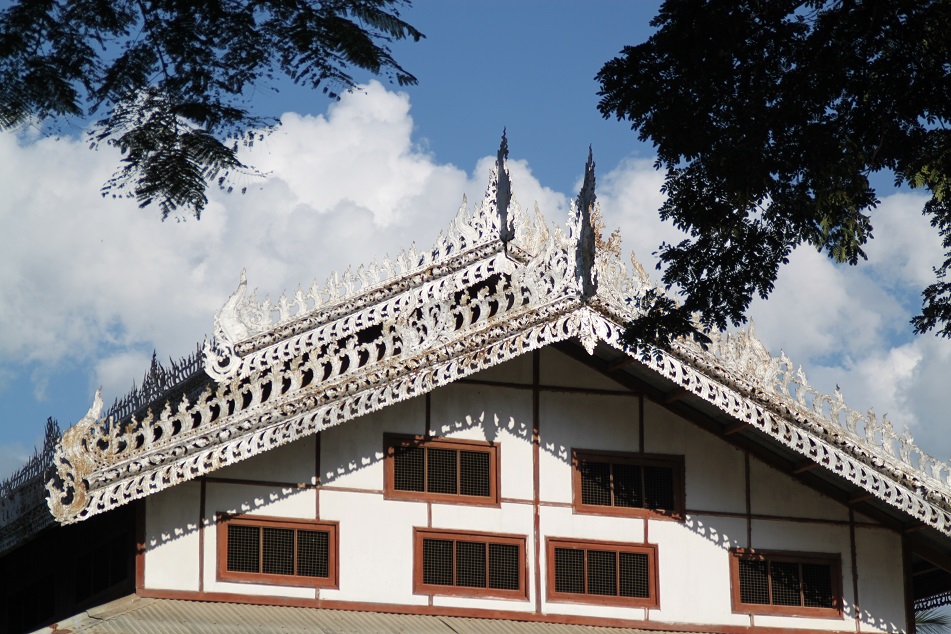
That monastery is so cool. You got some nice shots there – I love the monk with a kitten. I like how monasteries become refuges for stray animals.
That traffic light is hilarious. Unless someone is there to manually operate it I don’t quite see how that works.
LikeLiked by 2 people
I think you would love it, Jeff — not only because of the cats, but also because of its calm atmosphere. It’s always nice to see animals at places of worship, indeed. I remember how happy I was when I saw cats at a Balinese Hindu temple, a Byzantine church in Istanbul, and near the Blue Mosque.
If those lights went missing, I don’t think it would have impacted the traffic at all. It was still a useful point of reference though.
LikeLike
A beautiful visual journey into an exotic world! Thank you!
LikeLike
I’m glad you enjoyed this post, Peter. Exotic is probably the right word to describe Nyaung Shwe. Thanks for reading!
LikeLike
Wow, what an amazing building, well captured! Makes me want to go back and explore more of Myanmar! Cheers, Ron
LikeLike
Thanks Ron! Myanmar really is a magnificent country, and I can see myself returning one day in the future.
LikeLiked by 1 person
Great article! Do they have any reason to build the monastery on pillars? To avoid flood or something? Because I saw that people build similar houses in Central Vietnam to avoid wild animals running into their houses. They also use the space under the house to keep cattles. I am still wondering how does the “traffic light” work? How do you know when is red and when is green? 🙂
LikeLike
I believe the reasons why people build stilt houses across Asia are more or less the same, either to avoid flood or wild animals, or to keep cattle. I wonder if one of those was the reason why this monastery was built on stilts. As for the traffic lights, nobody paid attention to them anyway. So I guess those poles were more like a warning system to remind people to slow down when crossing the intersection. Thanks for reading!
LikeLiked by 1 person
hmmm sungguh perpaduan arsitektur yang unik antara tradisional dengan sentuhan eropa. aku baru tau kalau Myanmar merdeka dari inggris. memang lelaki di sana khas sekali dengan sarungnya macam di indonesia walau motifnya beda dan perempuannya yang senang sekali memakai bedak dingin berwarna putih untuk mukanya. sepertinya myanmar kini makin banyak didatangi oleh turis maupun investor asing terlepas dari benar atau tidaknya penindasan terhadap etnis minoritas di sana yang sering muncul di berita.
LikeLike
Secara resmi seluruh Burma (nama lama dari Myanmar) jatuh ke tangan Inggris pada abad ke-19, ditandai dengan jatuhnya Mandalay ke kekuasaan mereka (postingan selanjutnya). Saya membayangkan mungkin Indonesia beberapa dasawarsa yang lalu suasanya agak mirip Myanmar, dimana para prianya pergi kemana-mana dengan mengenakan sarung. Sejak membuka diri di tahun 2011, memang pertumbuhan turis asing yang masuk ke Myanmar sangat fantastis. Mengenai penindasan terhadap etnis minoritas, sepemahaman saya ini terjadinya di negara bagian Rakhine saja, khususnya di bagian barat laut. Banyak yang mengkritik pemerintahan setempat karena kurang tegas terhadap pihak-pihak ekstrimis di sana. Tapi yang saya tau justru menurut pihak-pihak ekstrimis, pemerintah sipil saat ini dianggap terlalu mengakomodir para minoritas. Menurut saya masalah ras dan etnis memang selayaknya ditangani dengan hati-hati dan tidak saling memanasi.
LikeLiked by 1 person
setuju sekali, karena aku dan mungkin orang pada umumnya hanya tau tentang “pemusnahan etnis minoritas” tanpa tau kondisi real nya di sana : )
LikeLike
Shwe Yan Pyay monastery was really worth the long walk – I especially loved its cozy feel and the ornate rooftop carvings. As for the former Shan palace, it’s a shame we weren’t allowed to take photos once inside. I distinctly remember having to put our camera bags into a locker opposite the ticket desk. Let’s hope Nyaung Shwe preserves its rustic charm while growing and giving its dusty roads a proper layer of asphalt!
LikeLike
It really was. I loved how peaceful the ambiance in and around the monastery was. If only we could take photos inside the former palace — I remember some of the sections in the palace were quite fascinating. Let’s hope places all over Myanmar handle the sudden influx of foreign tourists wisely, so they won’t lose their charm.
LikeLiked by 1 person
Awesome post! What an amazing structure! Some very nice captures 😊
LikeLike
Terima kasih banyak, Trees. Aside from the beautiful architecture, the monastery really was a nice place to escape from the bustle of Nyaung Shwe.
LikeLiked by 1 person
Beautiful images.
LikeLiked by 1 person
Thanks! Glad you enjoyed them.
LikeLiked by 1 person
Kind of a bizarre structure with those incongruous white stairs, isn’t it? I love the young monk distracted by the kitten, and the traffic light is hilarious!
LikeLiked by 1 person
Aesthetically speaking, I think they could have done better than just coming up with the idea of constructing those white stairs. But then maybe they were cheap to make, or the materials were readily available. I wanted to play with the kittens, but that would mean disturbing the monks even more. So I restrained myself, which was hard. It seems like I’m not the only one who finds those traffic lights amusing.
LikeLiked by 1 person
WOW! That was fantastic. With every image I just viewed, I heard myself grunting with approval. I kept thinking this blogger has talent. I may never find myself in this color-perfect locale, but I sure enjoyed your perception of it through the eye of your camera. I do wonder about the traffic lights thought. Could it be that they have to have them there due to some government regulation? Otherwise, they are of no use, so the aren’t working. In my opinion, the street signage is much more interesting anyway.
LikeLiked by 1 person
Hi Jen. I really appreciate the time you spent reading this post, as well as writing such a kind and thoughtful comment. About the traffic lights, I’m not sure about the situation there. But in Indonesia — another Southeast Asian country — some places have traffic lights even though they actually don’t need them. This is caused by corruption, where to use up the allocated budget, the local government officials often come up with these random ideas. Hopefully that’s not the case with Nyaung Shwe.
LikeLiked by 1 person
Hope not too!
LikeLike
Kalau melihat kondisinya, gak bisa dibayangkan seandainya kota itu tidak terhubung dengan Inle Lake atau dengan adanya latar belakang plus bangunan bersejarahnya, mungkin hanya akan menjadi tempat yang antah berantah di daratan Asia. O iya untuk penginapan di situ bagaimana Bam? Kualitas dan kemudahannya?
Btw, aku baru tau kalau Thanaka itu dibuat dari kayu yang dihaluskan. Selama ini aku pikir itu dibuat dari biji-bijian yang ditumbuk 🙂
LikeLiked by 1 person
Kalau bukan jadi gerbang masuk ke Inle Lake mungkin Nyaung Shwe cuma jadi kota kecil yang sepi memang. Soal penginapan, kami nginep di hotel yang gak mahal tapi kamarnya luaaaas banget. Tapi ya namanya Myanmar sehari bisa beberapa kali mati listrik sih, meskipun gak separah waktu di Nepal. Cukup oke lah tempatnya, stafnya juga sangat membantu meskipun kemampuan Bahasa Inggrisnya masih terbatas. Terus di sekitaran hotel banyak tempat makan. Di sebelahnya persis malah ada kayak warung gitu, jualan mie pake sayuran sama kacang tumbuk. Sederhana dan murah tapi enak! Ngomong-ngomong soal tumbuk-menumbuk, aku juga baru tau ternyata thanaka itu dari kayu.
LikeLiked by 1 person
Bisa kebayang, kalau gak ada apa-apa pasti bosan di situ. Ini ke Indein gak jauh khan? Btw, kalau mati lampunya gak separah Nepal, masih bisa tahan laaah 🙂
LikeLike
Waktu itu aku ke Indein sekalian half-day trip mengeksplor tempat-tempat menarik di tengah danau sih. Kalo langsung dari Nyaung Shwe ke Indein harusnya bisa lebih cepet. Hehe iya, Nepal mati lampunya juara sih.
LikeLiked by 1 person
Jadi di tengah danaunya ada semacam pulau gitu ya? Aku pikir cuma danau kosong dan yang menarik di sisi-sisinya aja.
LikeLike
Naaah, lengkapnya sebenernya nantinya aku bakal nulis satu postingan khusus mengenai Inle Lake sih. Tapi masih lama, hehe. Jadi di tengah danau itu ada perkampungan ‘terapung’ lengkap dengan kebun sayur terapung. Rumah-rumahnya sebenernya nggak bener-bener terapung sih, karena tetap disangga kayu-kayu yang menancap di dasar danau. Selain itu di bagian lain dari tengah danau ada secuil daratan yang biasanya dipake buat jadi pasar.
LikeLiked by 1 person
Wow, those oval windows are so beautiful! Love your photo of the monks seated in front of them. When I was in Myanmar, I had a horse cart driver named Nyaung Shwe — now I know where his name cam from. Thanks, Bama!
LikeLiked by 1 person
Beautiful and very unique those windows really are. I wonder if Nyaung Shwe is actually that horse cart driver’s hometown, or his parents’. I think you would love the monastery, Kelly. Thanks for reading!
LikeLiked by 1 person
Arsitektur Shwe Yan Pyay-nya menarik, mas. Tangga putihnya kontras dengan dominasi warna coklat.
Foto di dermaga keren banget! Semoga modernisasi tidak kompromi dengan warisan sejarah dan budaya ya.
LikeLiked by 1 person
Nah soal tangga putih itu, memang selera sih. Kalau menurut selera saya sih akan lebih cantik lagi kalau tangganya juga terbuat dari kayu. Di sekitaran dermaga Nyaung Shwe memang fotogenik banget sih. Banyak banget scene yang menarik buat difoto. Semoga ke depannya pembangunan di kota ini tidak menghilangkan daya tariknya.
LikeLiked by 1 person
Incredibly beautiful pictures, and what an informative post! Thank you so much!
LikeLiked by 1 person
And thank you for reading and leaving such a lovely comment!
LikeLike
Wow! These pictures and your words are amazing! I feel like I can travel all over the world by visiting your website!
LikeLiked by 1 person
Thanks Ipuna! Feeling like we travel the world is indeed what travel blogs do to us — they inspire us to go further and to explore this beautiful planet we all call home.
LikeLiked by 1 person
I like the monochrome rust look of the temple. Temples in Southeast Asia are usually so bright and garish, which is interesting as well. The monk with the kitten is such a beautiful image. It’s great that you could visit Myanmar before it becomes overrun with tourists.
LikeLiked by 1 person
Probably another reason why I found the monastery very pretty is the fact that most temples in Indonesia, where I come from, emphasize on intricate details rather than garish appearance. But the ones in places like Thailand and Laos are equally intriguing indeed. I’m glad not only for having visited Myanmar twice, but also for the weather — it was mostly sunny during my two-week stay in the country on my second trip. Thanks for reading!
LikeLike
This post brought back some really nice memories! We also loved our stay at Nyaungshwe. The monastery with the oval windows was actually one of our highlights. When we visited we experienced an extremely big downpour of rain, followed quickly by blue skies and sunlight again. We witnessed the monks trying to stay dry while running from one building to the other. No chance…
I missed the abandoned Indein temple complex, would have loved to see that. We always try to stay a bit longer at a certain place, just to get used to it and make sure we learn about all kinds of interesting spots. This one we missed, so next time we even have to stay a bit longer 🙂
We rented bikes when visiting the city and the lake. Cool to cross the lake on a boat right next to your bike.. Thanks for taking us down memory land. Love to read your adventures, keep up the good work!
Emiel
LikeLiked by 1 person
I’m glad this post jogged those nice memories, Emiel. Actually I do remember your photo of the monastery. Such a lovely place it really was, wasn’t it? We were quite lucky with the weather during our stay in Nyaung Shwe, although not much so when we were in Mandalay. I think you will enjoy Indein as much as I did — definitely not to be missed on your next visit to Myanmar. Renting a bike is a great way to explore a place, which I did in Bagan on an e-bike, which was really cool. Thanks for reading and sharing your story, Emiel!
LikeLike
Pingback: A Waterworld Called Inle | What an Amazing World!
Hahaha… gara-gara lagi cari cerita soal inle makanya aku sengaja nyasar kesini… dan kota ini keliatannya asik juga yaaa… Aku belum sempat ke Inle dan sekitarnya dan pengen kesana jika waktu bersahabat. Selain Indein dan Kakku, mana lagi yaa..?
LikeLiked by 1 person
Waah mau ke Myanmar lagi mbak? Saya waktu itu di seputaran Inle Lake cuma 4 hari sih, dan kebanyakan memang eksplor danaunya. Mungkin bisa dipertimbangkan Taunggyi mbak soalnya dulu saya pernah baca katanya kota ini gak terlalu jauh dari danaunya.
LikeLike
Aku kan pengennya banyak. Bikin itin ini itu tapi gak beli2 tiketnya. Hahaha… tp gak papa, Aku mulai dari bikin itin dulu hahahaha… makasii ya mas Bama. Setiap kota itu banyak serunya…
LikeLiked by 1 person
Aku ingin begini, aku ingin begitu, ingin ini, ingin itu, banyak sekaliii… Malah nyanyi Doraemon. 🙂 Sama-sama mbak. Semoga itinerary-nya seru!
LikeLike